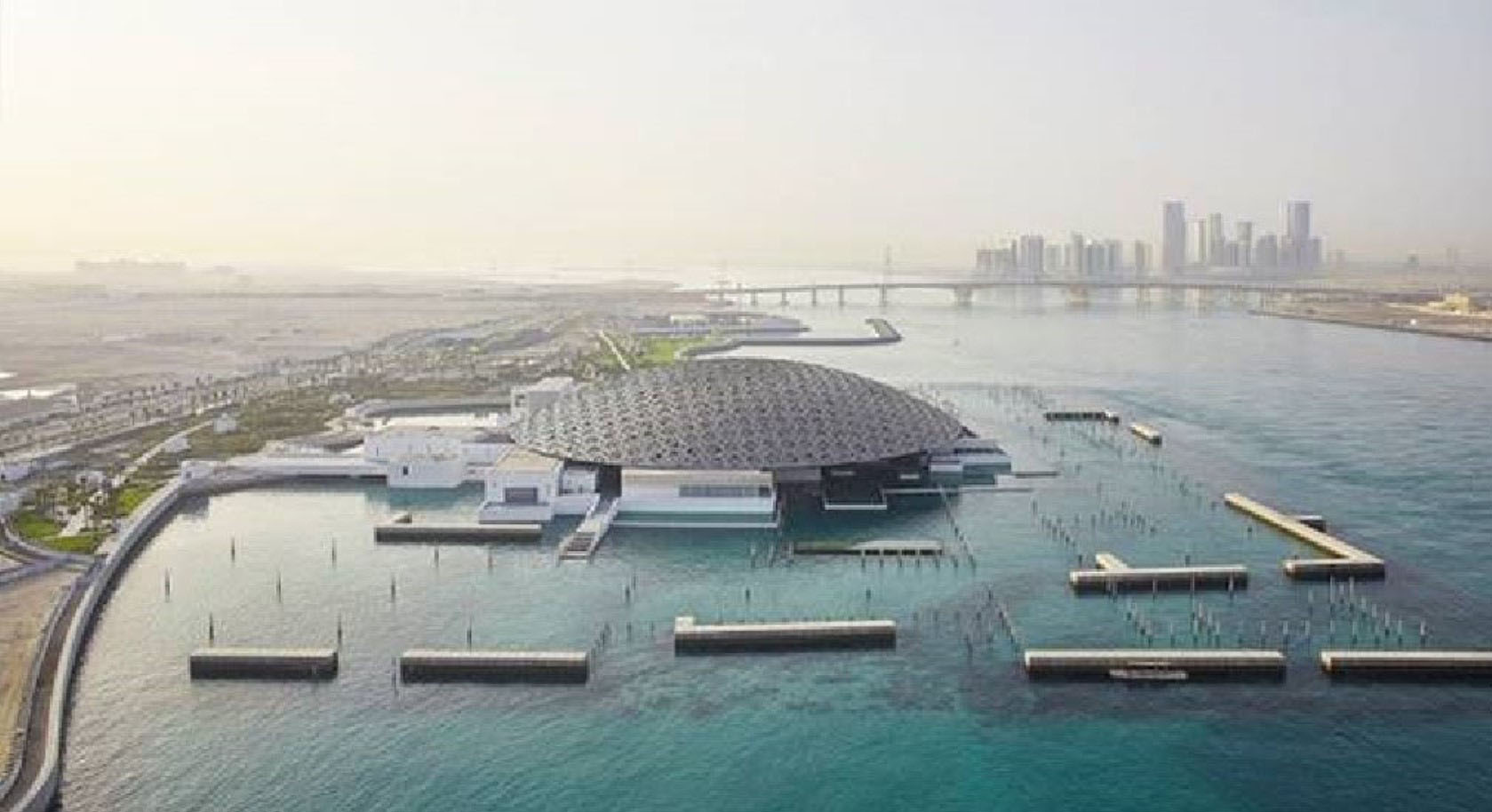Louvre Abu Dhabi celebrated its third anniversary on 11th November, 2020, reflecting on its most innovative year to date and looking ahead to the future of the institution.
In the face of 2020’s unprecedented adversity, the museum met the challenges borne of the global pandemic with agility and heightened creativity, commissioning its first short film, The Pulse of Time, and launching more than 20 new digital initiatives, drawing millions of visitors to its growing online community.
Louvre Abu Dhabi’s fourth year promises to be equally dynamic, with the museum implementing fresh programmes and unveiling exciting new acquisitions and loans in its galleries.
Mohamed Al Mubarak, Chairman of the Department of Culture and Tourism – Abu Dhabi said, “The achievements of Louvre Abu Dhabi in three short years have made a remarkable impact on the emirate’s cultural scene. What began as an agreement between the governments of Abu Dhabi and France has now led to Louvre Abu Dhabi standing as a beacon for our community and the world, sitting at the heart of Abu Dhabi’s cultural offering.”
Manuel Rabaté, Director of Louvre Abu Dhabi, said, “From the very inception of the museum, our mission has been to celebrate stories of cultural connections, to help visitors find common threads through art, across cultures, geographies, and time. This purpose has never been more relevant, as we look to new roles and models of what a museum can be.”
Louvre Abu Dhabi’s curatorial strategy is to tell stories of cultural connections a form of empathetic viewing that we need now more than ever. These connections are expressed through the juxtaposition of works across cultures, geographies, and time. As part of the museum’s third annual rotation of artworks in the galleries, masterpieces on loan from Musée d’Orsay include, Edgar Degas’ The Bellelli Family (1858-1869), Pierre-Auguste Renoir’s Railway Bridge in Chatou (1881), Vincent Van Gogh’s The Caravans, a Bohemian Camp (1888), Claude Monet’s Haystacks, End of Summer (1891), Eugène Louis Gillot’s The Arrival of the “La Fayette” in New York (early 20th century), Osman Hamdi Bey’s Old man before children’s tombs (1903) and Pierre Bonnard’s Southern setting, Le Cannet (1928). Alongside these, the museum has installed several maps and precious 14th – 18th century manuscripts loaned by Bibliothèque Nationale de France. The manuscripts from Syria, France, Egypt, India and Iran of sacred and scientific texts include scriptures from the foundations of the three Abrahamic faiths – Judaism, Christianity and Islam.
Several new acquisitions are joining Louvre Abu Dhabi’s growing permanent collection, including several artefacts in the earlier chapters of the museum’s chronological timeline of human creativity. Sumerian Statue of a Female Worshipper (3rd century Mesopotamia), adds to the discourse on religious beliefs in the museum’s introductory gallery and will go on display alongside Egyptian Statue of a Kneeling Man (ca. 4th-7th century Egypt). A Jain sculpture of a Standing Jina (11th century India) is a new addition to the museum’s gallery exploring Asian trade routes, and the exceptional new Feline-shaped Incense Burner (11th century Central Asia) stands head to head with Louvre Abu Dhabi’s renowned Lion-shaped aquamanile (13th century Northern Germany).
Throughout the coming months, visitors will also be able to discover several new acquisitions in the later chapters of the museum’s path, including The Adoration of the Magi by Pieter Coecke van Aelst (ca. 1523), a biblical portrait of Saint-Joseph (also called Lo Spagnoletto) by Spanish painter Jusepe de Ribera (before 1647), a series of Eight Paintings of Foreign Dignitaries by an anonymous artist (18th century China), as well as Marc Chagall’s exquisite Between Darkness and Night (1938-43).
Dr. Souraya Noujaim, Scientific, Curatorial and Collection Director at Louvre Abu Dhabi said, “The past three years have enabled us to research, refine, and develop the cross-cultural threads that underpin the stories of cultural connections told within our permanent galleries. Diversity and universality remain at the heart of our collection, and we are so proud to have been able to engage new audiences by adapting to a hybrid model of the physical and virtual presentation that will benefit us for years to come.”
Regional partners of Louvre Abu Dhabi include Department of Culture and Tourism – Abu Dhabi, Dubai Municipality, Guggenheim Abu Dhabi, Zayed National Museum, Department of Antiquities and Museums of Ras Al Khaimah, the Department of Antiquities of Jordan, the National Museum of Oman and the Ministry of Tourism of Saudi Arabia.
Louvre Abu Dhabi’s 2019 loan of The Collar of the Order of the Golden Fleece (16th century Flanders) to The Metropolitan Museum of Art in New York represented a major step in the international recognition of the collection. This piece was part of the exhibition The Last Knight organised at The Metropolitan Museum of Art between October 2019 and January 2020.
Another loan from Louvre Abu Dhabi’s collection included the Samovar by Joseph Hoffman (1904 – 1905) to Musée des Arts Décoratifs’ (MAD) Luxes exhibition in Paris. The artwork was originally presented to the public in Louvre Abu Dhabi’s 10,000 Years of Luxury exhibition in 2019.
Through its programme of temporary exhibitions in collaboration with Agence France-Muséums and French partners, Louvre Abu Dhabi was also able to borrow major artworks from international lenders (Chester Beatty Library, The Metropolitan Museum of Art and the Furusiyya Art Foundation) for the exhibition Furusiyya: The Art of Chivalry Between East and West (February – October 2020).
To mark its third anniversary, Louvre Abu Dhabi will premiere its first original short film, The Pulse of Time, a 40-minute audio-visual journey bringing to life a story of humanity through art. The film is narrated by well-known figures in three languages Arabic, by Emirati producer, TV presenter and actor Saoud Al Kaabi, known for his role in the Emirati film City of Life (2009); English, by British actor, screenwriter, and film director, Charles Dance, known for playing Tywin Lannister in HBO’s Game of Thrones (2011); and French, by French-Swiss actress, Irène Jacob, known for her role in Three Colours: Red (1994). The sound creation was commissioned and jointly produced by Alexandre Plank, Radio Producer for the French National Radio channel France Culture and two-time winner of the PRIX ITALIA international competition for radio and TV, and Antoine Richard, winner of the same prize.
Following the premiere on Louvre Abu Dhabi’s YouTube channel, The Pulse of Time will be available on the Louvre Abu Dhabi website from 12th November.







